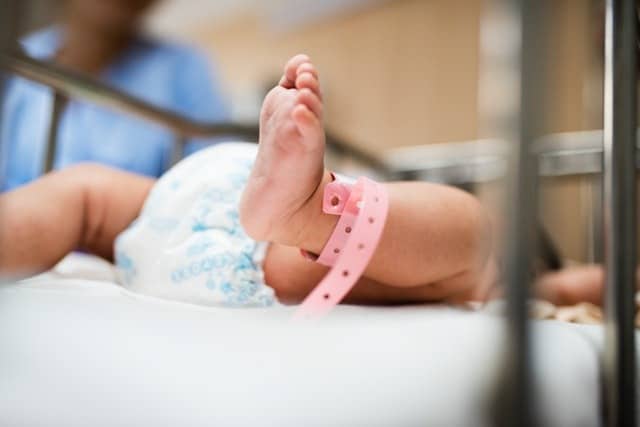Birth rates in the Brussels and Walloon regions fell last year, marking a continuation of a trend that predates the Covid-19 pandemic, according to the Perinatal Epidemiology Centre (Cepip) in its 2022 annual report.
Analysing birth certificates in Brussels and Wallonia, the francophone organisation also compiled statistics on obesity rates, labour induction and caesarean sections, all of which reached record highs.
Between 2013 and 2022, births fell 13% in the capital and 8.9% in Wallonia. Last year, they respectively numbered 21,650 and 34,093. A more substantial decline was observed during the health crisis in 2020 and although this recovered in 2021, it has since been falling again, resembling patterns seen before Covid-19.
The findings also analysed the health of mothers at childbirth, showing that obesity rates are rising quite considerably; in Wallonia almost one in five (19.2%) pregnant women were obese last year – up from 14.6% in 2013. In Brussels this is now 16%, up from 11.7% ten years ago.
Similarly, 42% of pregnant women in Brussels were overweight in 2023, a rise of 8% in a decade.
Related News
- Paternity leave extension to improve gender equality falling short in Belgium
- Single people wishing to adopt in Belgium face significant obstacles
Being overweight can lead to complications at childbirth, with labour more frequently needing to be induced – in Brussels one in three labours are induced. Cepip calls for measures to reduce the overall number of inductions, reserving the procedures for serious medical conditions.
Meanwhile caesarean rates reached a ten-year high – one in five births in the capital are through C-section. This intervention is commonly needed if a mother has previously given birth through caesarean; to relieve strain on healthcare services, Cepip suggests avoiding the first caesarean where possible and trying for vaginal delivery even if previous births have been C-sections.

